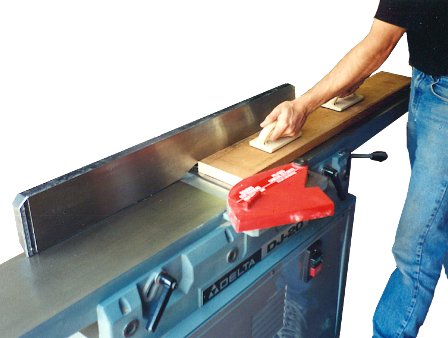Wood is a beautiful material that is relatively easy to work with and has some amazing properties. One of the disadvantages to wood, however, is that it expands, contracts, cups, and warps in different conditions, so it is not as stable as stone or most metals. To begin a project, a woodworker usually starts with rough lumber and must go through various steps to ensure that it is flat. Some woodworkers prefer to use handtools only, but for those that use power tools, a jointer is typically used.
The majority of warping and splitting of wood occurs after it is cut out of the log and dried. Each board will continue to move throughout its life as the temperature and humidity changes. When a woodworker purchases wood from a lumberyard, it is rarely flat and smooth and special tools are required to prepare it for use in projects such as furniture.
A jointer includes infeed and outfeed tables, and a set of rotating blades is positioned between these two tables. A fence is set on one side to serve as a guide. The infeed table and outfeed table are adjusted so that they are close to parallel, but the infeed is slightly lower, exposing a small amount of the cutting blades. The woodworker presses the lumber against the infeed table and pushes it onto the outfeed table; the rapidly spinning blades remove a small amount of material. If the wood is particularly warped, several passes may be required.
After a sufficient number of passes, one surface of the wood is flat. The process usually continues with a thickness planer, another specialized power tool that removes wood from the opposite face of the board. A few passes through a thickness planer creates a board that has two flat and parallel face.
Next, the woodworker usually takes the partially surfaced board back to the jointer to square up the edge. In this instance, the board is placed vertically against the fence. A few passes may be required to get a flat edge that is square to the two faces. The remaining edge is usually squared up on a table saw.
The fence on most machines can be adjusted to various angles. By adjusting the fence in this way, the device can also be used to create chamfers along the edge of a board.











